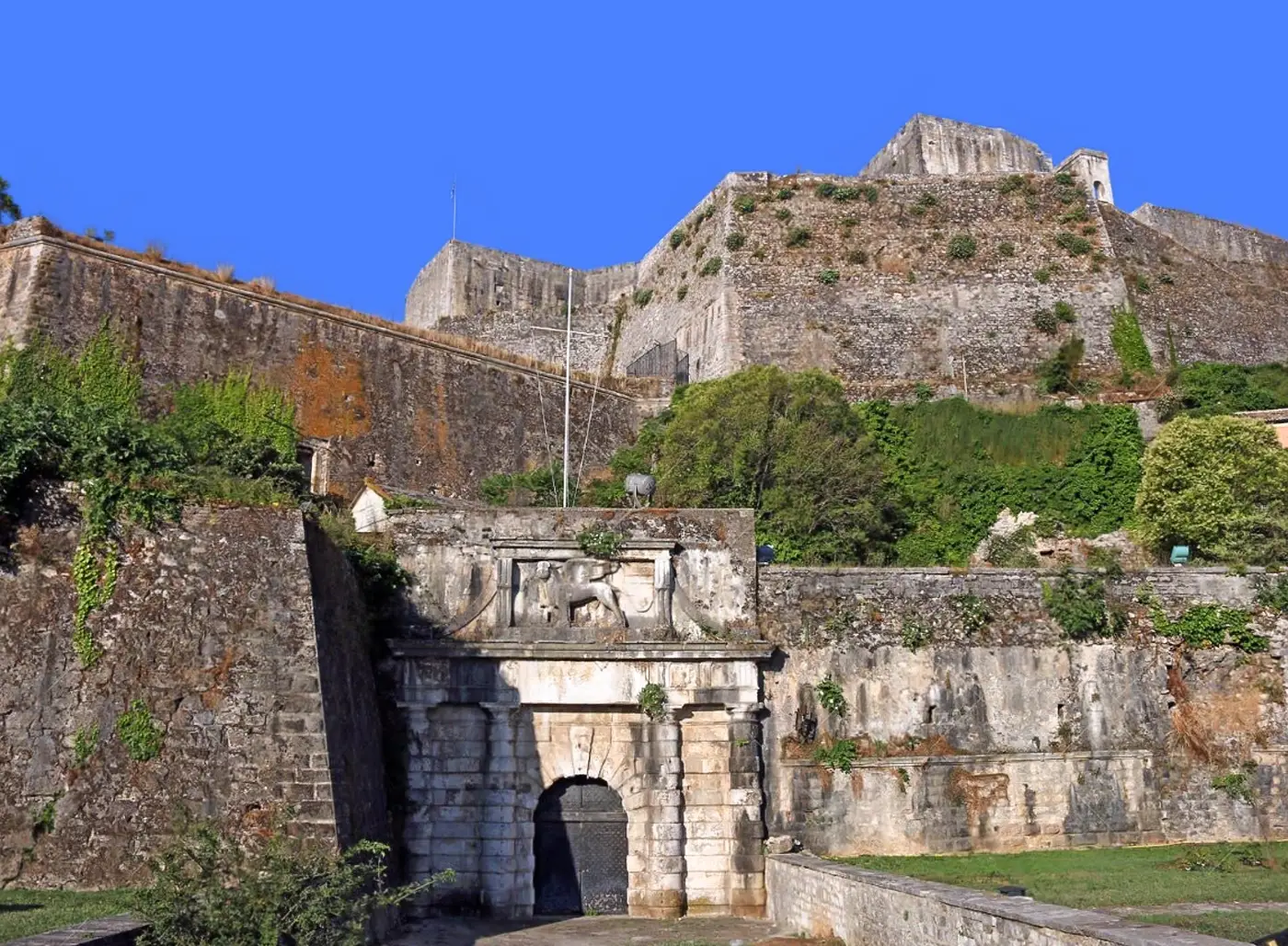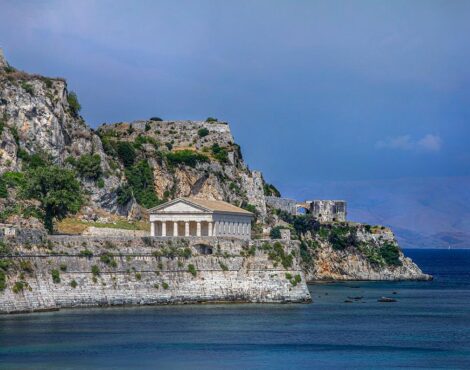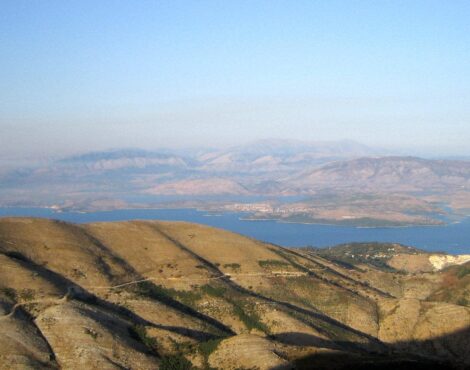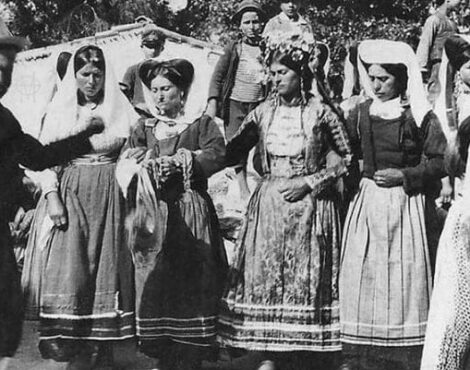The Old and New Fortresses of Corfu are two of the island’s most significant historical monuments, reflecting its rich military and cultural heritage. These imposing fortifications, which dominate the city of Corfu, bear witness to the island’s turbulent history and the need for protection against invasions and conquerors.
Perhaps the most well-known landmark of the entire island, the Old Fortress is built on a rocky peninsula with two characteristic hills, known as the towers of the sea and the land. Its history dates back to Byzantine times when medieval Corfu was destroyed by Gothic raids, forcing its inhabitants to seek new refuge. The Old Fortress began to be fortified, gradually becoming a reliable stronghold. However, it reached its peak during the Venetian era, when its fortifications were perfected. This unique fortress complex, known in Venetian times as “Fortezza Vecchia,” marks the eastern edge of the city and is separated from it by an artificial moat, the “Contrafossa,” which was created to enhance its defense. The entrance to the fortress is through a bridge that connects the city to the peninsula.
After the 6th century, the area of the Old Fortress was fortified and inhabited by survivors of the destruction of ancient Corfu. During the Byzantine period (6th – 13th centuries), the peninsula served as the island’s capital, with fortifications further reinforced by the Venetians after the 15th century. The Venetians constructed two imposing bastions, Savorgnan and Martinengo, which still stand today as remarkable examples of fortification engineering. The Old Fortress successfully withstood three major Ottoman attacks in 1537, 1571, and 1716, proving its strong defenses and strategic importance. By the 16th century, the city of Corfu had taken on roughly its present form, with the Old Fortress transformed into a military installation. The name “Corfu” derives from the two peaks of the fortress, which were referred to in Byzantine times as “Koryfo” (meaning “peaks”).
The Old Fortress is an outstanding example of military architecture, featuring colossal defensive structures that showcase the expertise of Venetian engineers. Today, the fortress houses the Corfu Regional Archives, the Public Library, departments of the Ionian University, services of the Ministry of Culture, as well as exhibition and event halls. In front of the beautiful British-era church of Saint George, on the plateau of Versiada, musical events are frequently held, while a café operates within the site. On the northern side, near the small harbor of Mandraki, visitors can find the Corfu Sailing Club and a quiet beach beneath the shadow of the fortress walls, where they can enjoy swimming in the blue waters of the Ionian Sea with views of Faliraki and the Mouragia district of the old town.
On the other side of the city, specifically at its northwestern end, stands the New Fortress of Corfu, known in Venetian times as “Fortezza Nuova.” Built on the rocky hill of Agios Markos, it was constructed by the Venetians in the 16th century when the need for further protection of the city became urgent, as the Old Fortress was no longer sufficient to defend the expanding settlement.
The construction of the New Fortress began in 1576 and was completed in 1645. The Venetian architect Ferrante Vitelli oversaw the works, which involved demolishing more than 2,000 buildings in the Sarocco area, including houses and churches, to obtain the necessary construction materials. Over the centuries, the New Fortress underwent various modifications and expansions, particularly by the British during their rule (1814-1864). The fortifications were further strengthened to counter Ottoman raids, and new military installations were built. Unfortunately, the fortress suffered significant damage during the bombings of World War II. Nevertheless, it continues to attract numerous visitors each year who wish to explore the history and culture of Corfu.





